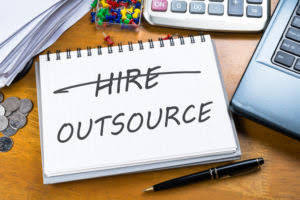Halfway through the year, it issues new shares in the amount of an additional 100,000 shares. The Weighted Average Shares Outstanding represents a company’s normalized, time-weighted common share count across a specified period of time. From there, simply scroll down until you find the section in the 10-Q or 10-K called “Capital Stock.” All the details you need will be there, plain to see. You’ll see the various other stock categories I’ve discussed, so don’t let that confuse you. One possible point of confusion we haven’t yet mentioned is stock given to employees as compensation, typically in some combination of restricted stock, options, or equity grants. This “issued” stock can be less than the total authorized, but it can never be more.
MSTR (MicroStrategy) Shares Outstanding (EOP) – GuruFocus.com
MSTR (MicroStrategy) Shares Outstanding (EOP).
Posted: Sat, 20 Apr 2024 16:44:17 GMT [source]
Floating stock
In this scenario, the company is trying to create an appearance of rapid growth in earnings per share to appear like a solid investment opportunity. Outstanding shares are the number of a company’s shares available on the secondary market. Therefore, the total number of shares outstanding of Apple Inc. at the end of the year 2016 is 5,336.16 million.
What is Weighted Average Shares Outstanding?
The total number of shares issued is the sum of all shares that a company has issued to investors, including those held by shareholders, insiders, and institutions. Treasury shares, on the other hand, are shares that a company has repurchased from the open market or bought back from shareholders and are held by the company itself. Subtracting treasury shares from the total number of shares issued gives the number of outstanding shares. An outstanding Share is an important number closely tracked by investors and analysts following various companies. It impacts the earnings available to common shareholders of the company and the free float of shares in the market.
Adjusting for Stock Splits and Stock Dividends
When calculating outstanding shares after a stock split, simply multiply the old number of outstanding shares by the split ratio. Outstanding shares are an important metric for investors and analysts to consider when evaluating a company. By knowing the number of outstanding shares, investors can determine the company’s market value, as well as calculate key metrics such as earnings per share and price-to-earnings ratio. For example, you can calculate a company’s earnings per share (EPS), a common metric used to compare companies’ performances. You can find a company’s earnings per share by dividing the company’s profit by its outstanding shares of common stock. It’s important to note that outstanding shares do not include treasury stock, which are shares that were once owned by investors that a corporation has repurchased.
Issued Vs. Outstanding Vs. Authorized

When you buy stock in a company, you are buying a percentage ownership in that business. How much of the business your one share buys depends on the total common stock outstanding, a figure you can easily determine using the company’s balance sheet. A company can increase its number of outstanding shares through stock splits. They can also reduce outstanding shares by undertaking reverse stock splits known as share consolidations. If a company has no warrants, convertible bonds, or directly issued stock options, the fully diluted share count will be the same as the outstanding share count.

Also, the figure will change when other financial instruments, like employee stock options, are converted into shares. The number of outstanding shares of a company can be found on a company’s most recent quarterly or annual with the SEC, typically listed on a company’s balance sheet under How to Calculate Shares Outstanding the category of “Capital Stock.” It is important to note that this formula only applies to common shares and not to preferred shares, which have unique characteristics that require a different calculation. Another metric calculated using shares outstanding is the price-to-book (P/B) ratio.
- For example, you can usually find the number of shares outstanding on investor relations webpages, which are only available for publicly listed companies or on stock exchanges.
- So when a company has 1 million shares outstanding, but only 650,000 are available to the public, the float is either 650,000 or 65% of the total shares outstanding.
- The total number of shares issued by a company that are held by shareholders is referred to as outstanding shares.
- In the first 6-month reporting period, the company has 100,000 shares outstanding.
- And so in theory (and often in practice), highly-shorted stocks with a low float present ripe conditions for a so-called “short squeeze”.
- While there seems to be an abundance of positive effects through a share repurchase program, there are still some things that businesses should keep in mind before implementing one.
- It’s worth noting that a company’s basic number of shares outstanding can differ from its fully diluted number of shares.
- The stock exchange the company trades on will also report the number of outstanding shares.
- At any given point, instruments like warrants and stock options must be accounted for as well.
- The number of shares outstanding in a company will often change due to a company issuing new shares, repurchasing shares, and retiring existing shares.
- A company, however, may have authorized more shares than the number of outstanding but has not yet issued them.
- Outstanding shares are the aggregate number of shares that a corporation has issued to investors.
- The “Ending Shares Outstanding” represents the common share count on the first date of the quarter.
- They are the number of shares actually owned by the company’s shareholders.
- Therefore, the company currently has authorized 5,000 shares and has 2,000 shares issued and outstanding.
- Once you know how to calculate the outstanding shares, you can use this number to calculate a number of valuation metrics, or measures of a company’s performance and future earnings potential.
- In the US, public companies are obligated to report their number of shares outstanding as part of the SEC’s filing requirements.


